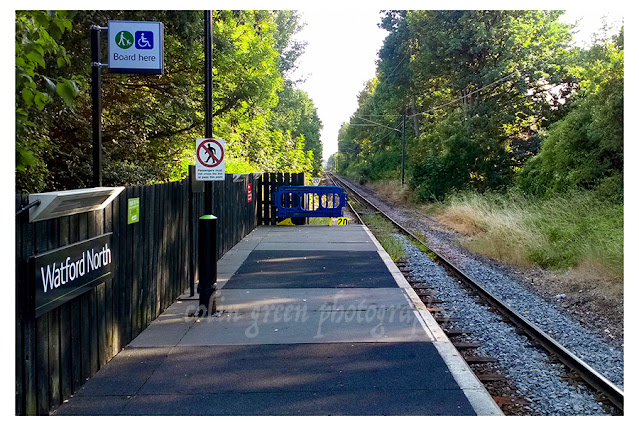The picture I have taken of the Piece Hall were done on a few occasions, the building being one of historical interest and basically it's on my doorstep. My first visit with a camera was in December 2013, armed with just a Samsung Tablet this was around the time I was just starting to take an interest in photography. I wanted to take a few pictures as the hall was due to close in January 2014 for a 3 year, £19million restoration project. I then returned in 2017 after the Piece Hall had reopened and you can see the transformation of the building from a tired old space to a shopping, leisure and community space.
The Piece Hall was opened on the 1st January 1779 as a place for people to trade cloth they had produced. As the cloth industry became larger and more industrialised the hall saw a decline in traders and was purchased by the Halifax Corporation in 1868 with conversion to a wholesale market following soon after. This is how the remained until 1971 when the wholesale market was dispersed and demolition of the hall was considered. Over the following years the hall underwent a refurbishment and was reopened as a tourist destination on the 3rd July 1976 including shops, museum and an art gallery. There was also an open air market added during this era before once again declining visitor numbers had the now Calderdale Council considering the best way forward for the building. A plan was put together with funding from various sources to refurbish the hall and it closed to the public on the 16th January 2014 to undergo a 3 year long refurb. The hall was reopened on the 1st August 2017 (Yorkshire Day) and provides restaurants, bars, shops and live entertainment including music concerts and has been the starting point for the Tour de Yorkshire.
Granted Grade I listed status on the 3rd November 1954, the reasons given for this were as follows
Historic interest
Rarity. It is the only remaining cloth hall in Yorkshire
Architectural interest
Architectural layout.
The hall is overlooked by Beacon Hill and the Square Church spire, which is all that remains of the church damaged by fire and partially demolished in the 1970's. The spire now forms part of the recently opened Halifax Central Library.
The hall also has a couple of supernatural stories linked with it, don't all old buildings. One of the units in the south west corner of the hall is said to be haunted by the ghost of a young girl known as Amy. The TV show Derek Acorah's Ghost Towns also broadcast from the hall in March 2006. In a segment of the show broadcast from the cellars at the hall, he claimed to have made contact with spirits known as Mary and another one known as Joseph. Another story from the hall is of the Hand Prints. Many local legends spring from these, at the westgate entrance to the hall are a pair of hand prints on the wall, sadly although still visible not as much as they once were. A couple of the more popular theories are that a local with was responsible for the prints, or the more well known story is that they were put there by a murderer as he was making his escape.
The pictures were taken on several occasions with various cameras, they can all be seen below or un-watermarked on Clickasnap by clicking on any picture a link should open in another window.
Granted Grade I listed status on the 3rd November 1954, the reasons given for this were as follows
Historic interest
Rarity. It is the only remaining cloth hall in Yorkshire
Architectural interest
Architectural layout.
The hall is overlooked by Beacon Hill and the Square Church spire, which is all that remains of the church damaged by fire and partially demolished in the 1970's. The spire now forms part of the recently opened Halifax Central Library.
The hall also has a couple of supernatural stories linked with it, don't all old buildings. One of the units in the south west corner of the hall is said to be haunted by the ghost of a young girl known as Amy. The TV show Derek Acorah's Ghost Towns also broadcast from the hall in March 2006. In a segment of the show broadcast from the cellars at the hall, he claimed to have made contact with spirits known as Mary and another one known as Joseph. Another story from the hall is of the Hand Prints. Many local legends spring from these, at the westgate entrance to the hall are a pair of hand prints on the wall, sadly although still visible not as much as they once were. A couple of the more popular theories are that a local with was responsible for the prints, or the more well known story is that they were put there by a murderer as he was making his escape.
The pictures were taken on several occasions with various cameras, they can all be seen below or un-watermarked on Clickasnap by clicking on any picture a link should open in another window.
This set below was taken with a Nikon d3300 on the 12th October 2019.
The pictures below were taken with a Samsung Galaxy Tablet on the 1st December 2013. This was before the halls refurbishment.
The following pictures were taken on the 20th October 2018 with a Nikon d3300.
The following pictures were taken with a Nikon d3300 on the 3rd October 2017.
This final set of pictures was taken with a Nikon d3300 on the 22nd September 2019.
Thanks for looking, please take a moment to share and follow me on social media, clicking any image should open a link in another window to the un-watermarked version on Clickasnap.
All the pictures remain the copyright of Colin Green.

.jpg%2012%2010%202019.jpg)
















%2020%2010%202018.jpg)
%2020%2010%202018.jpg)


%2012%20x%208.jpg)
%20copy.jpg)
%20copy.jpg)
%20copy.jpg)
.jpg)
%2012%20x%208%20.jpg)
%20copy.jpg)
































